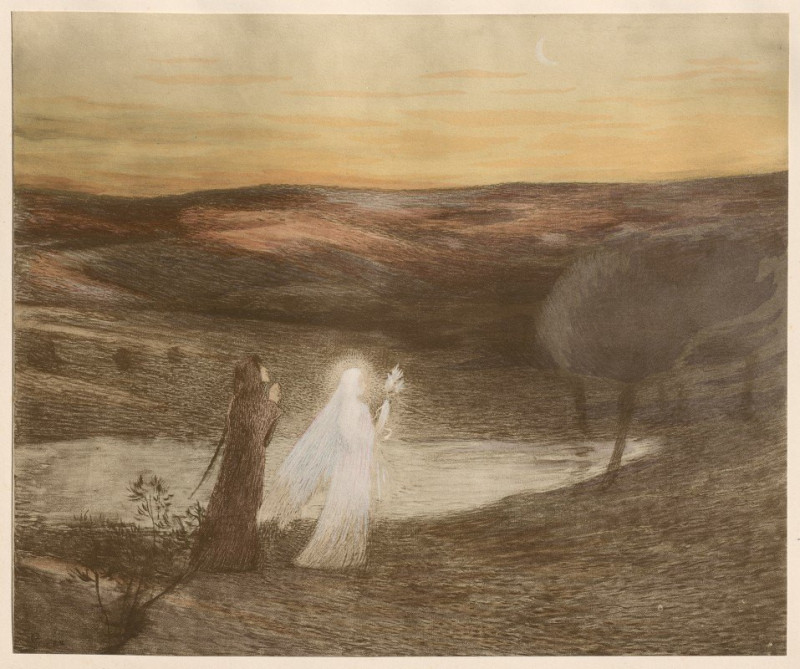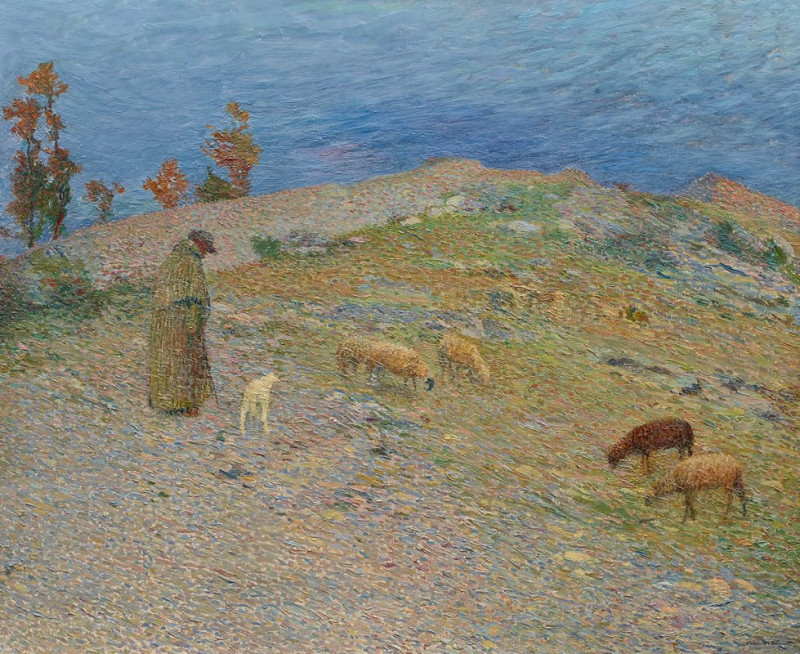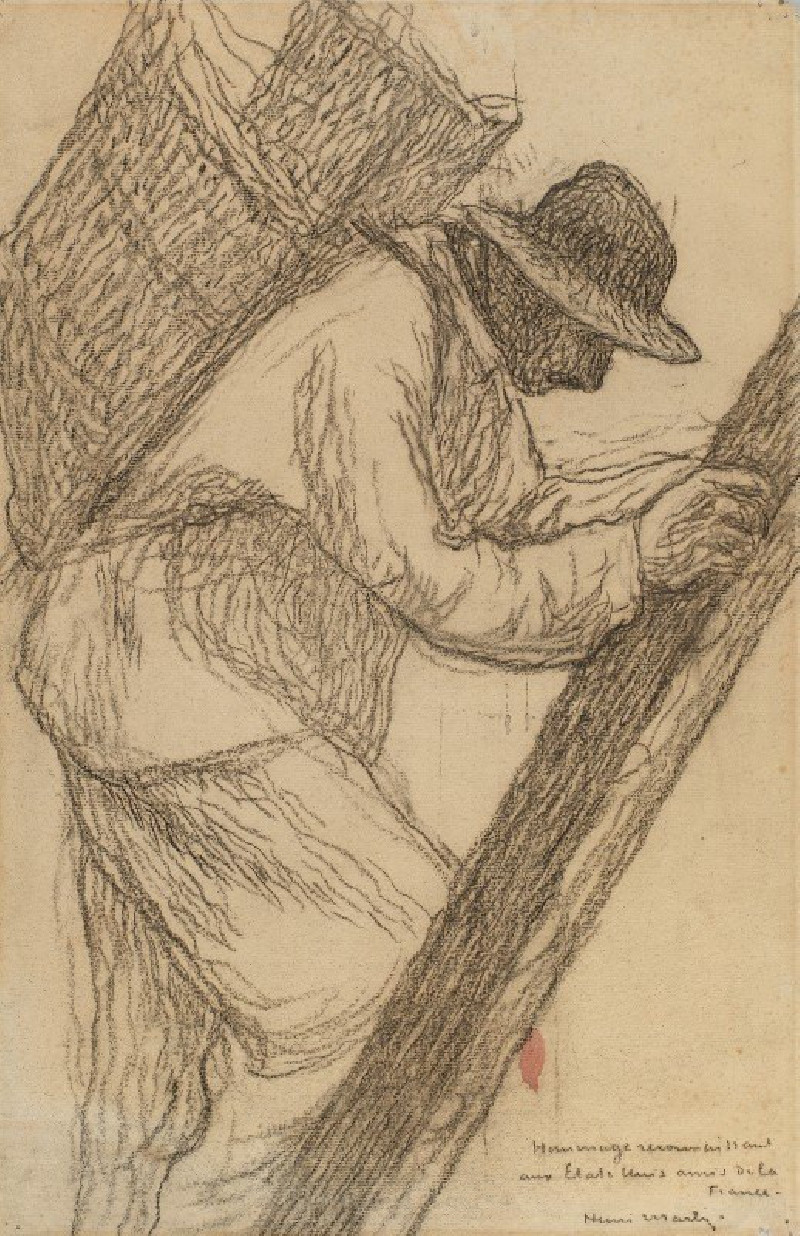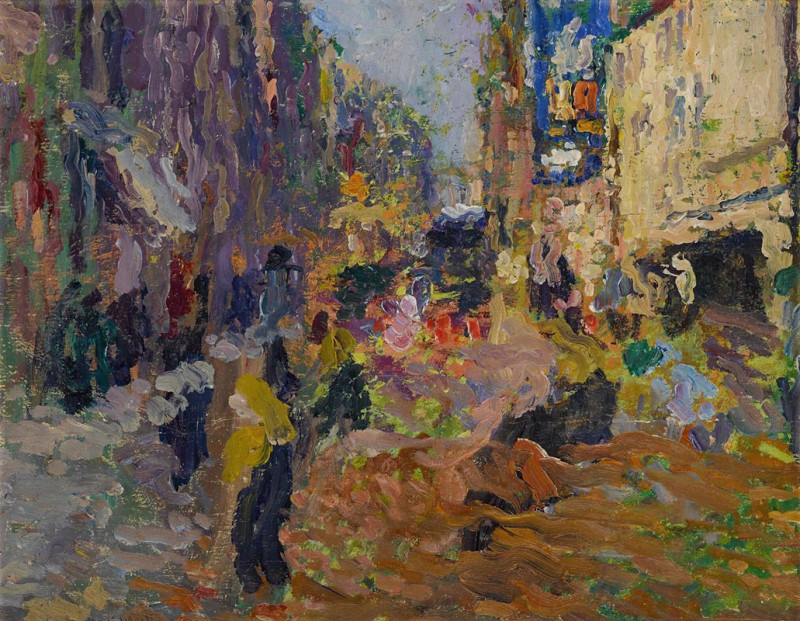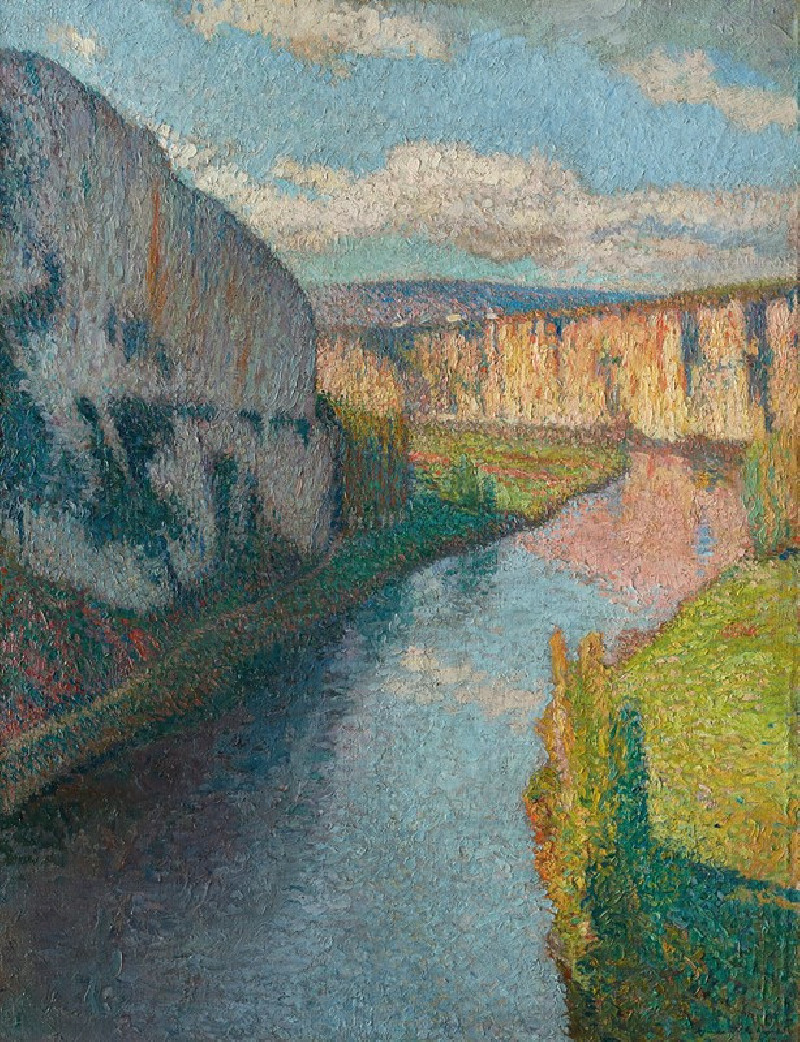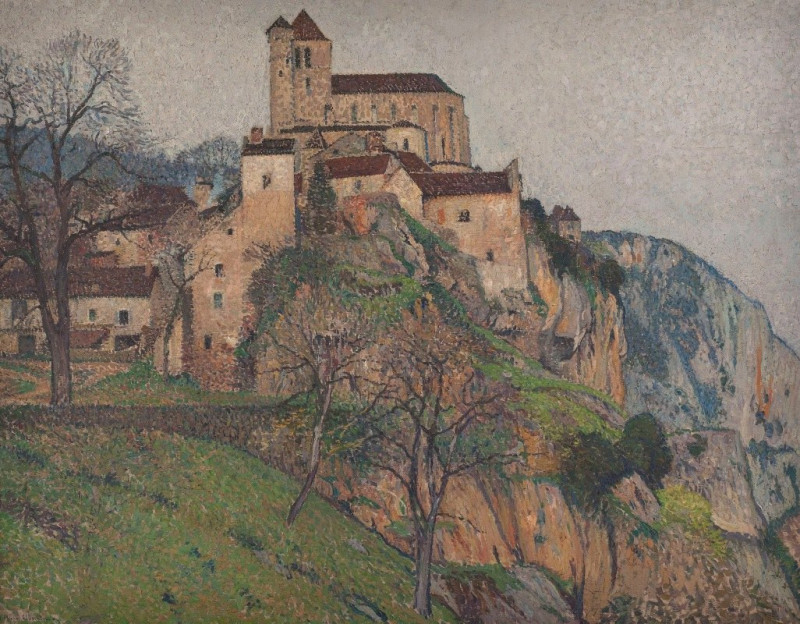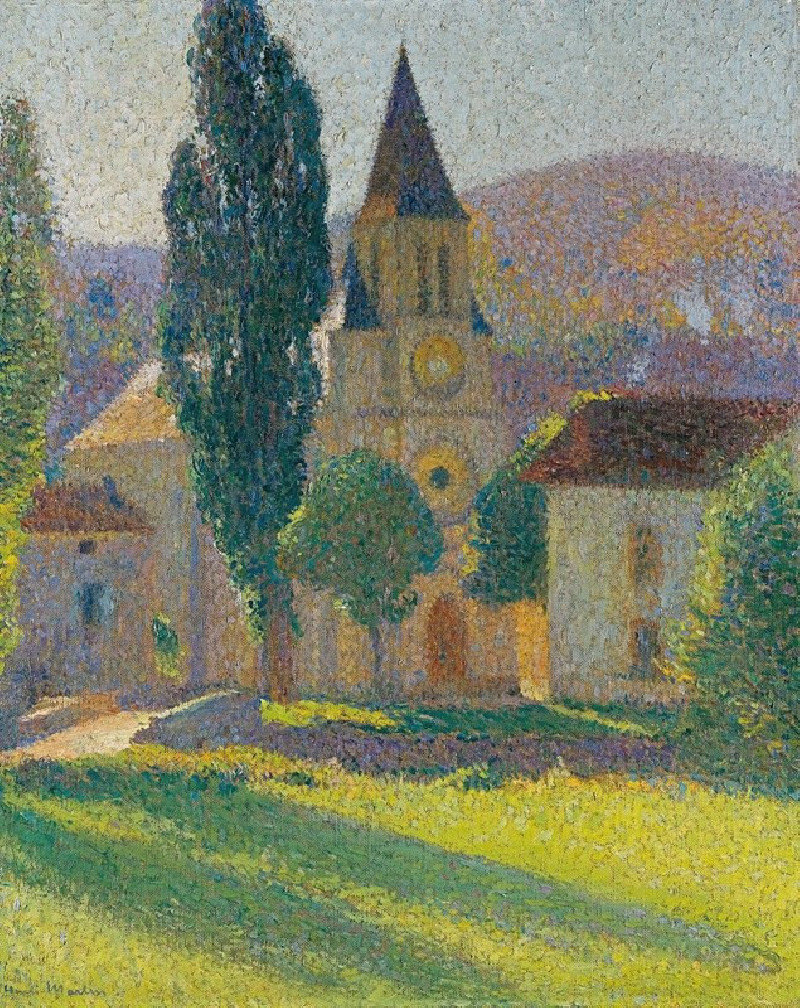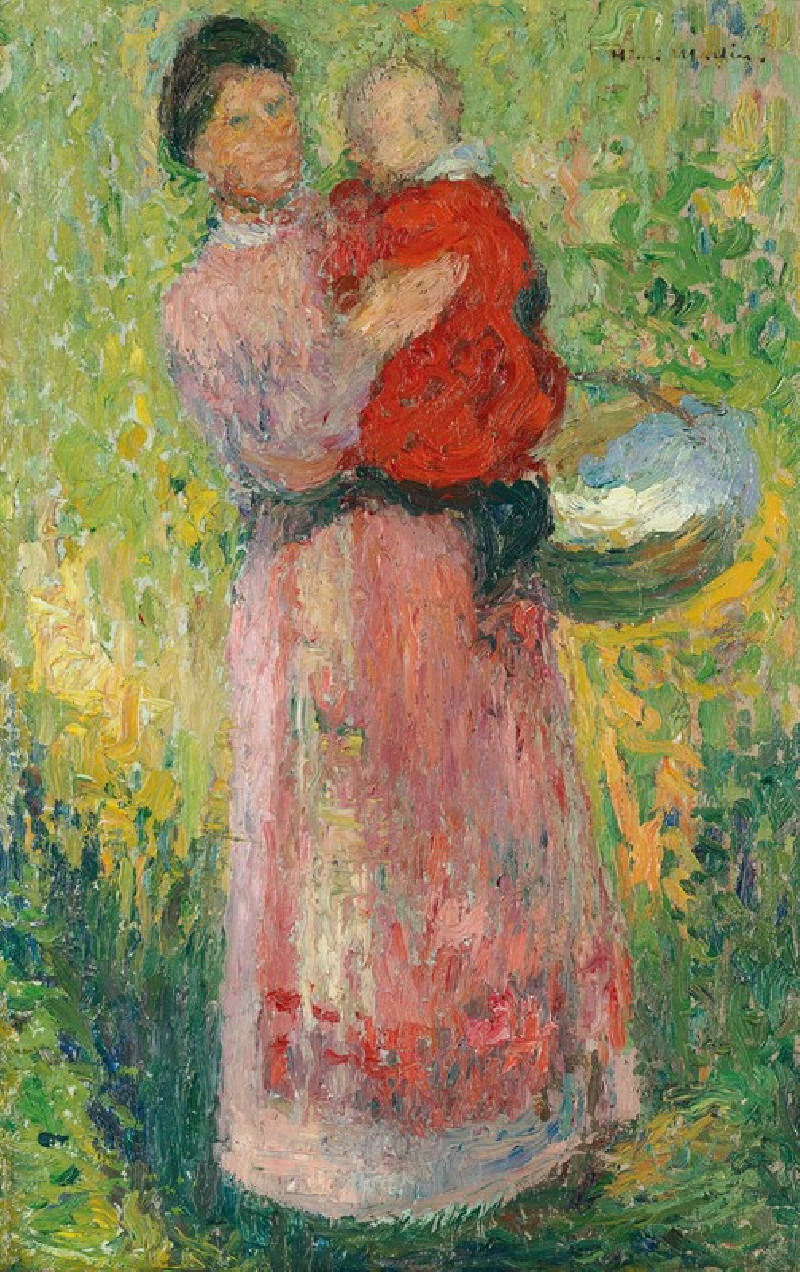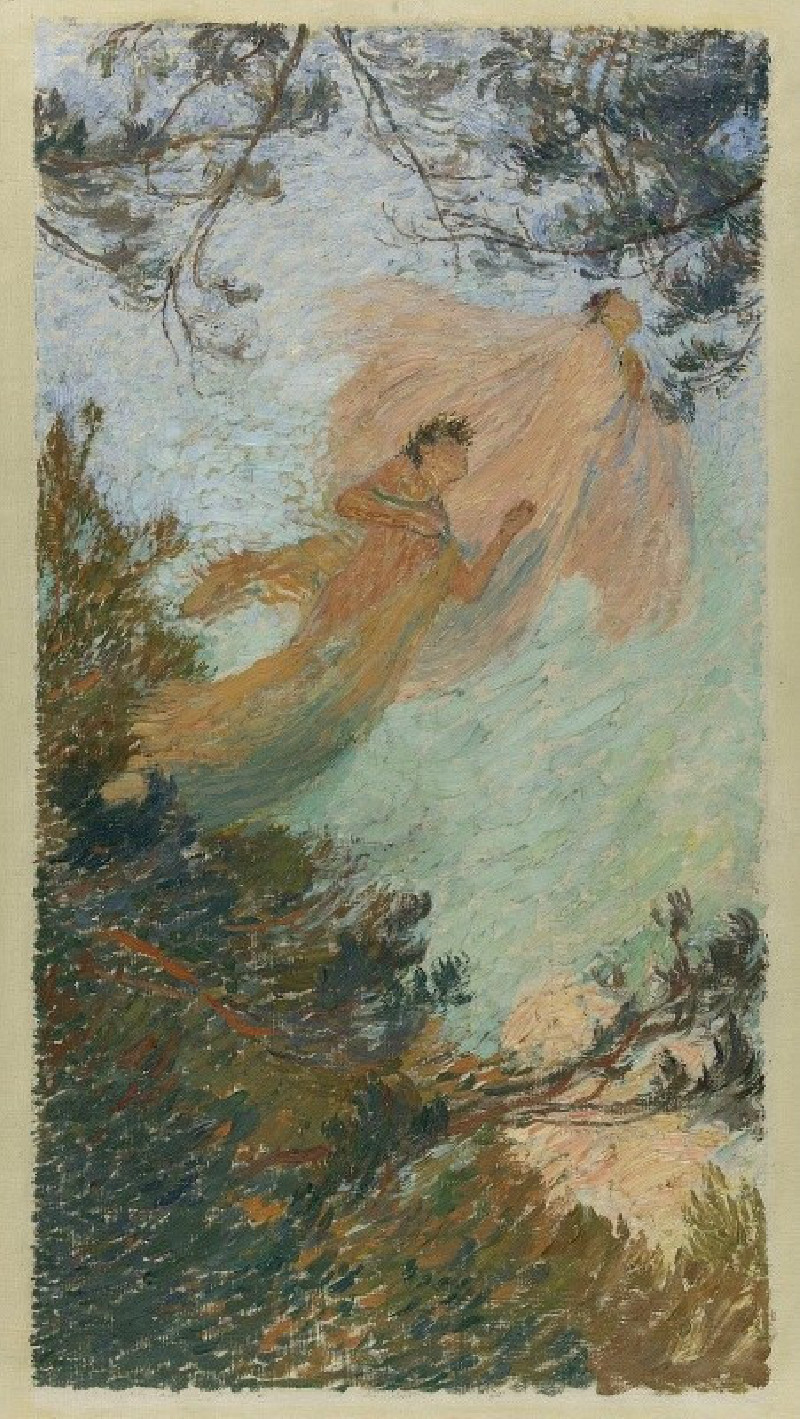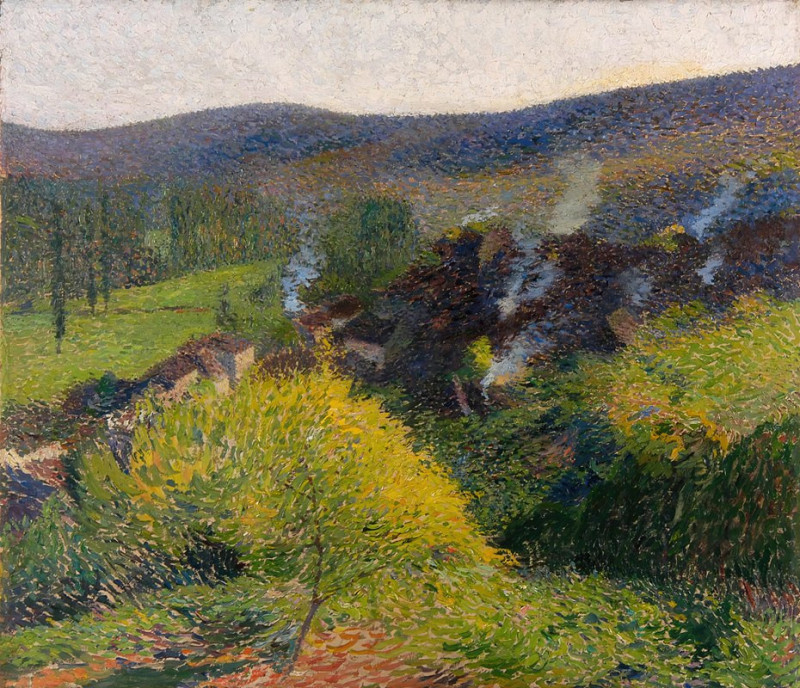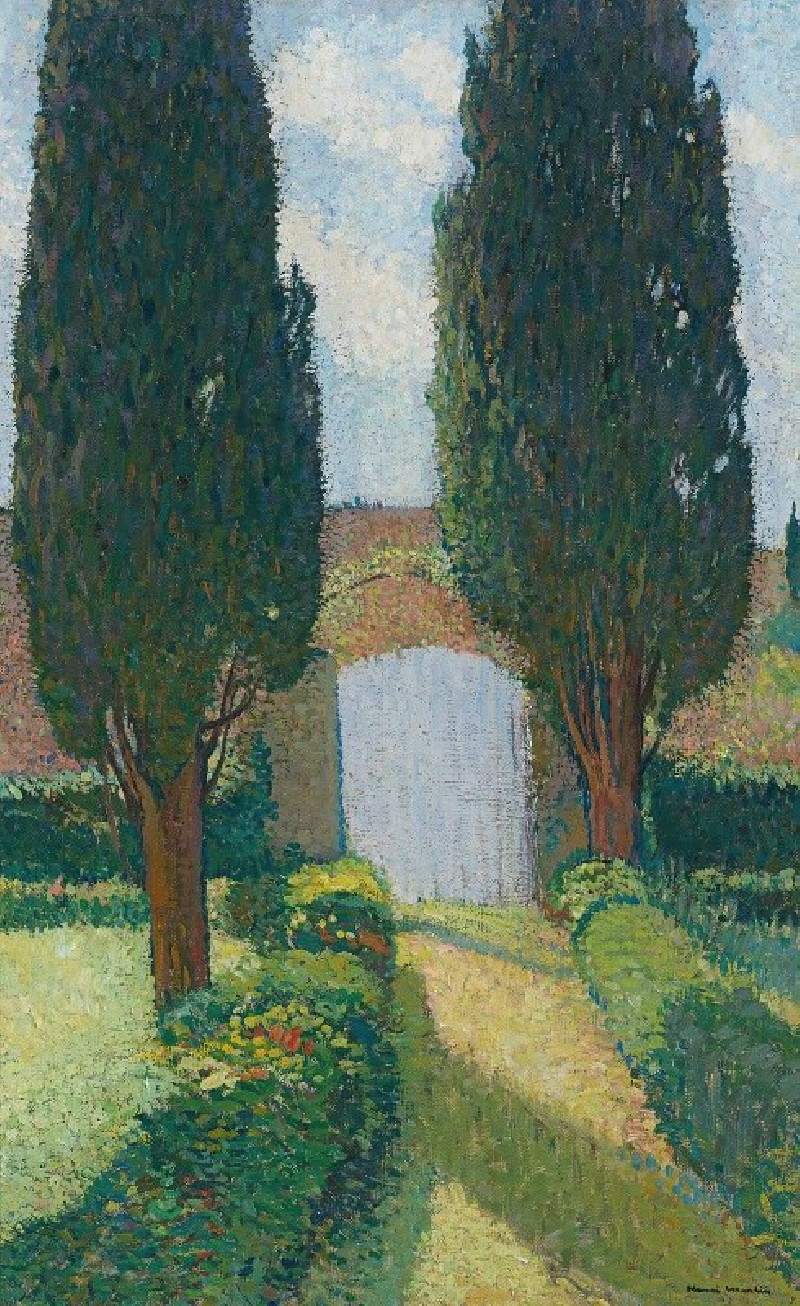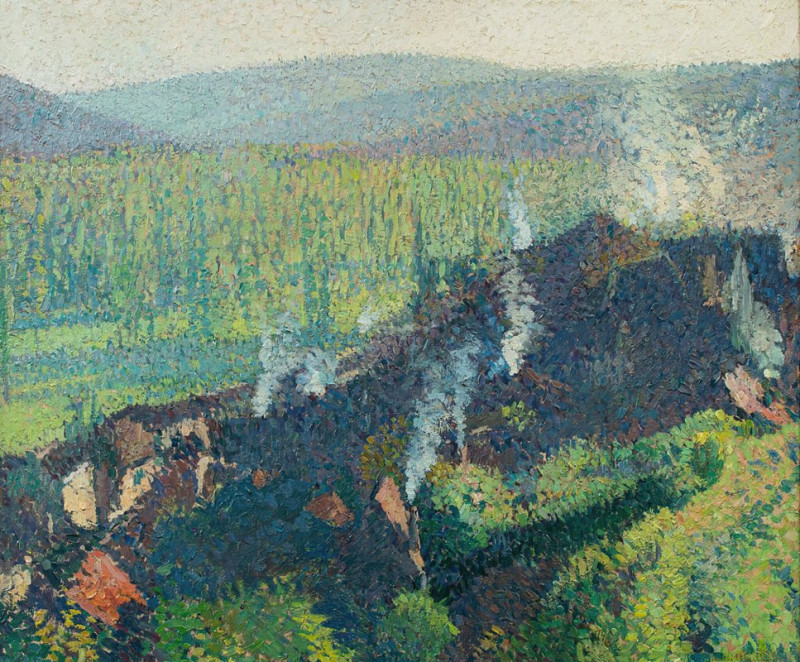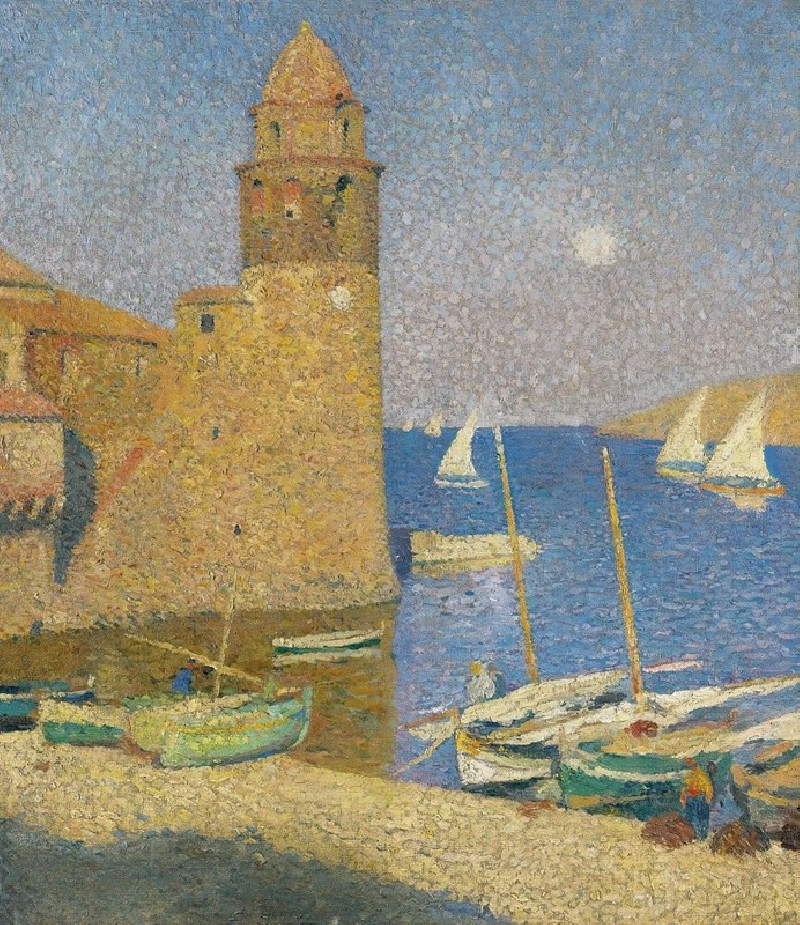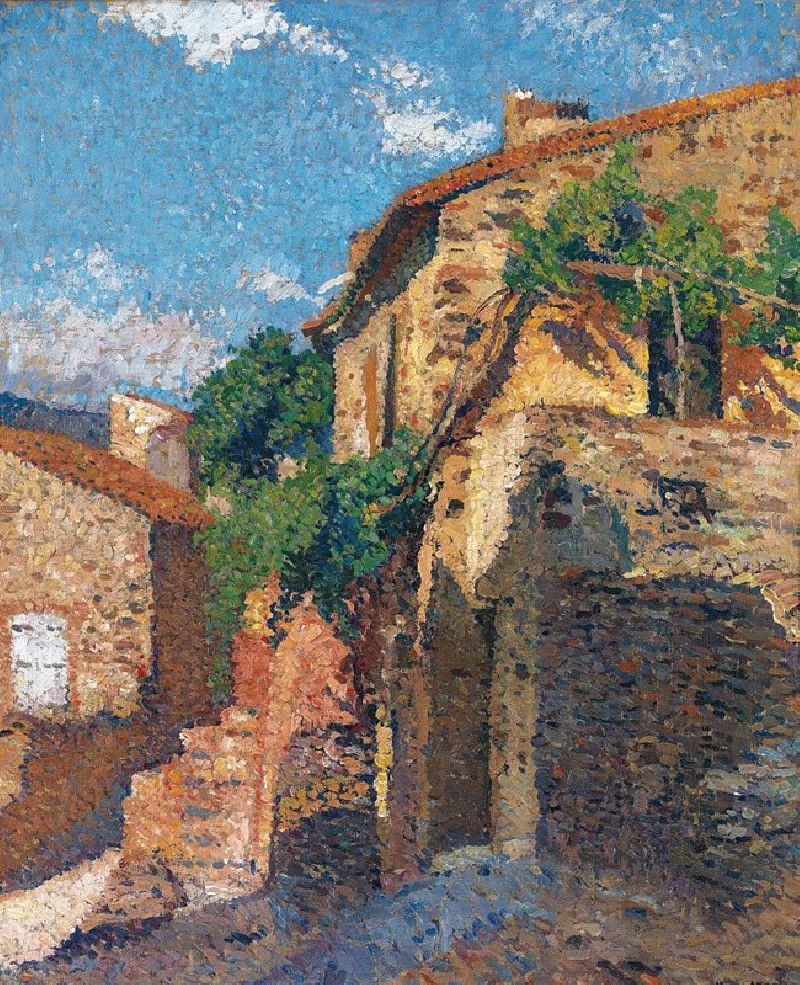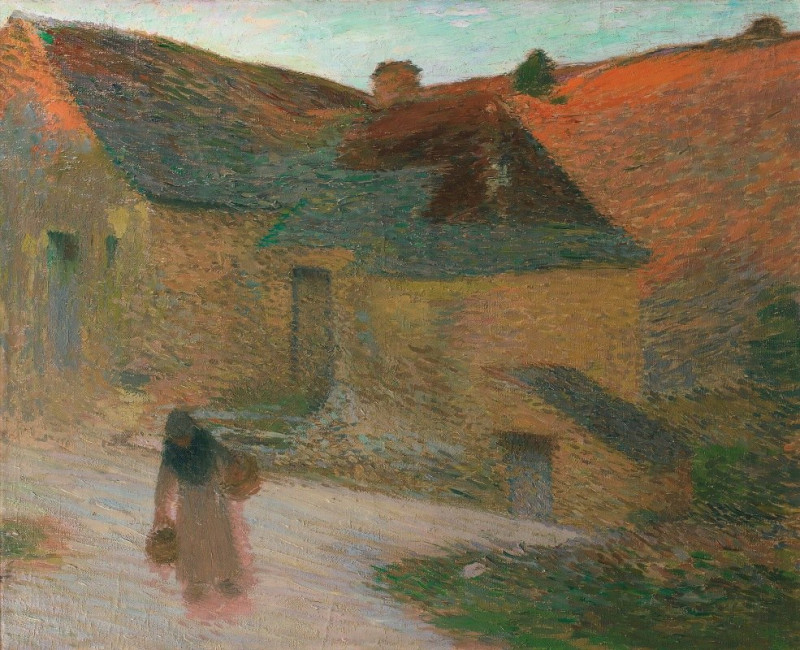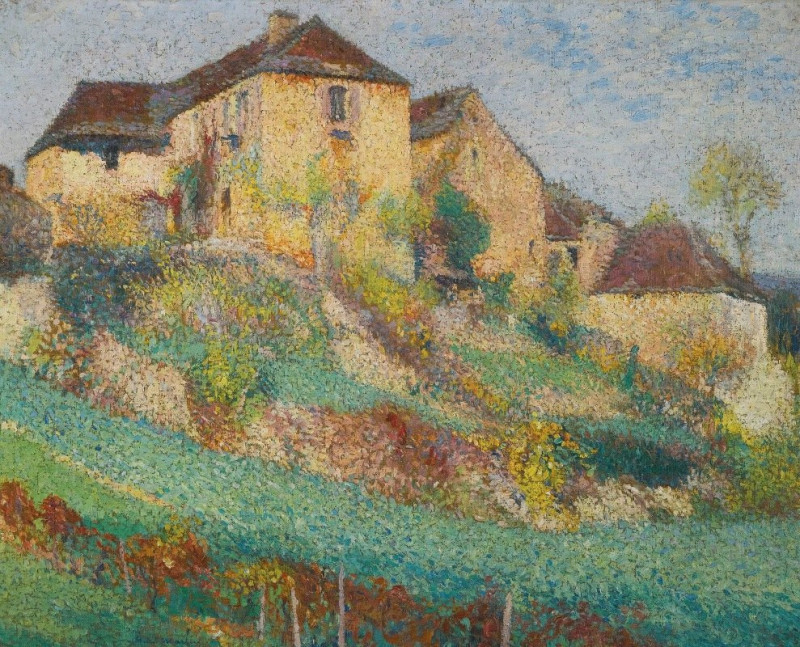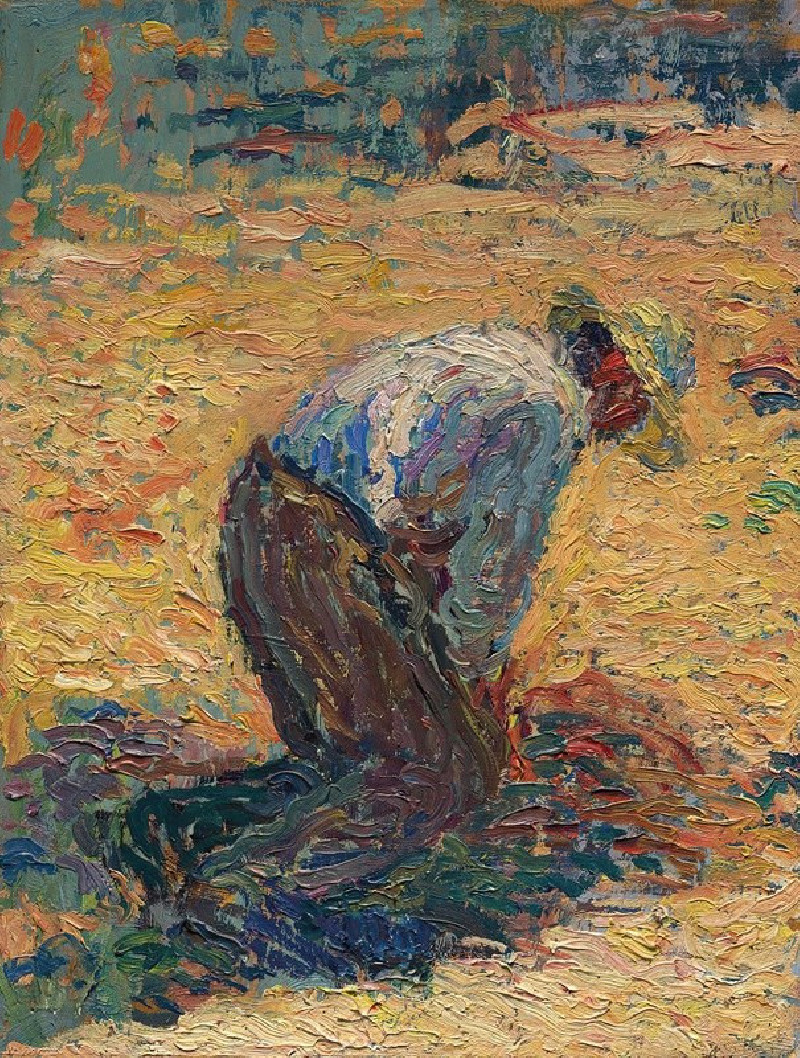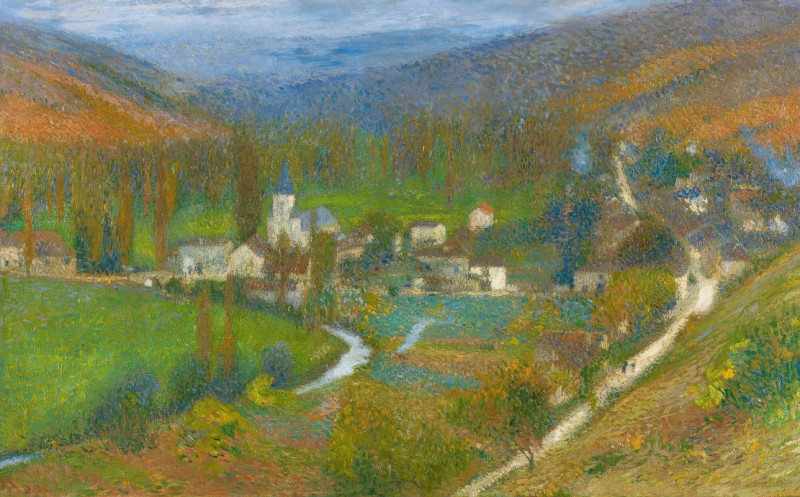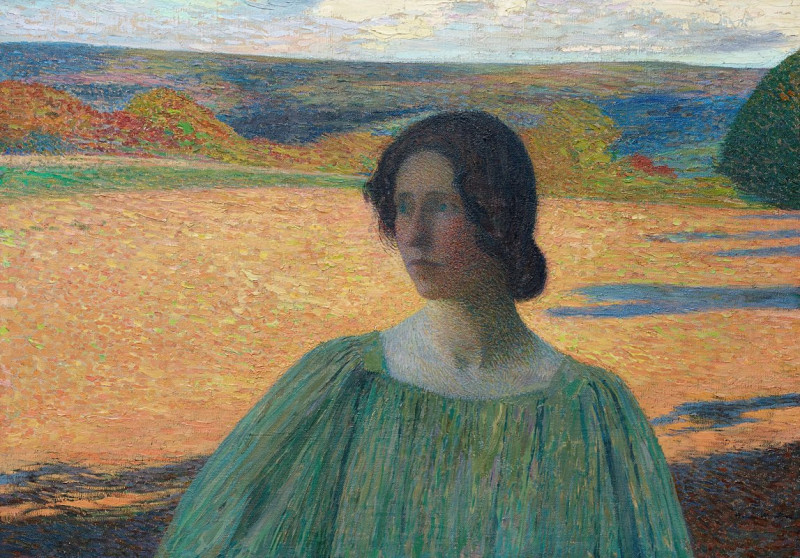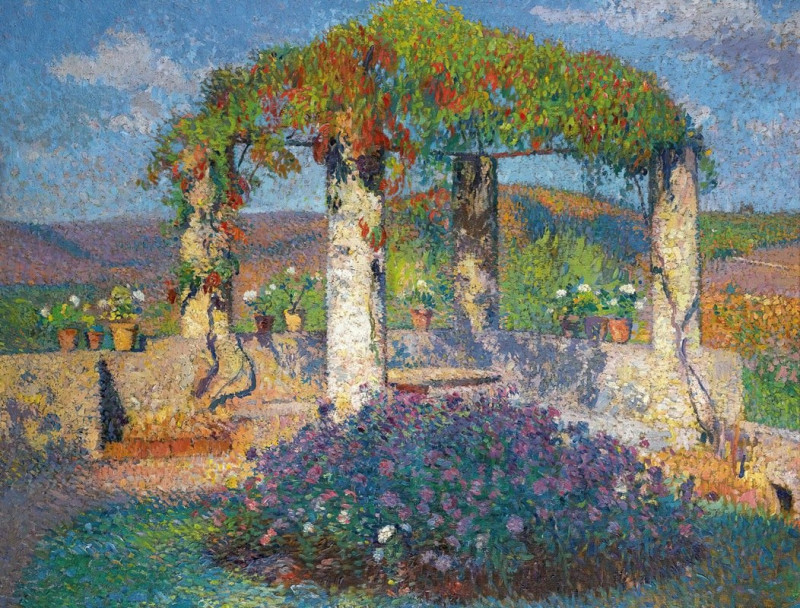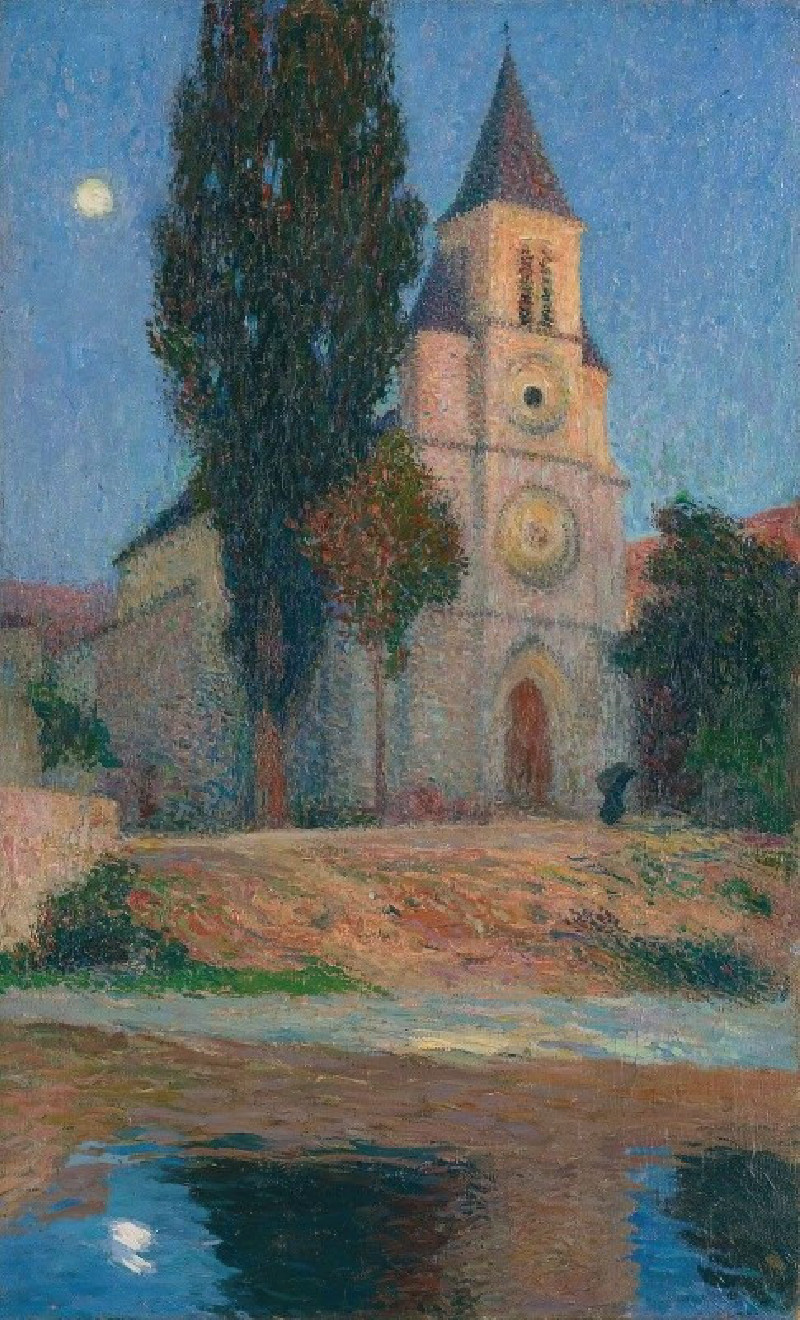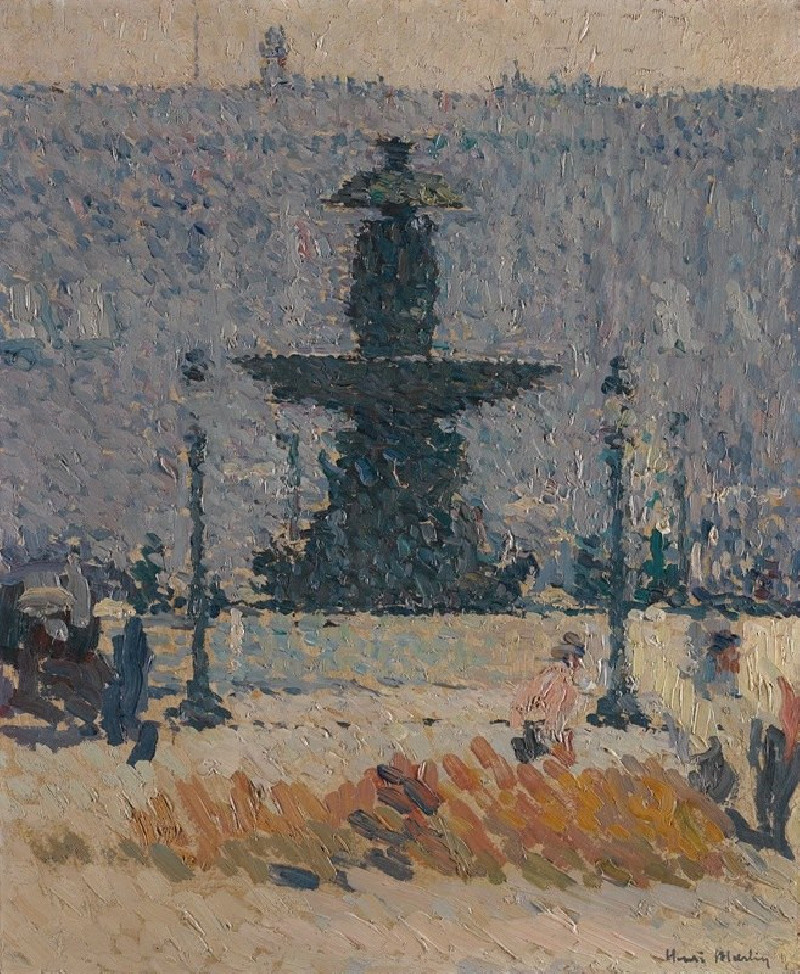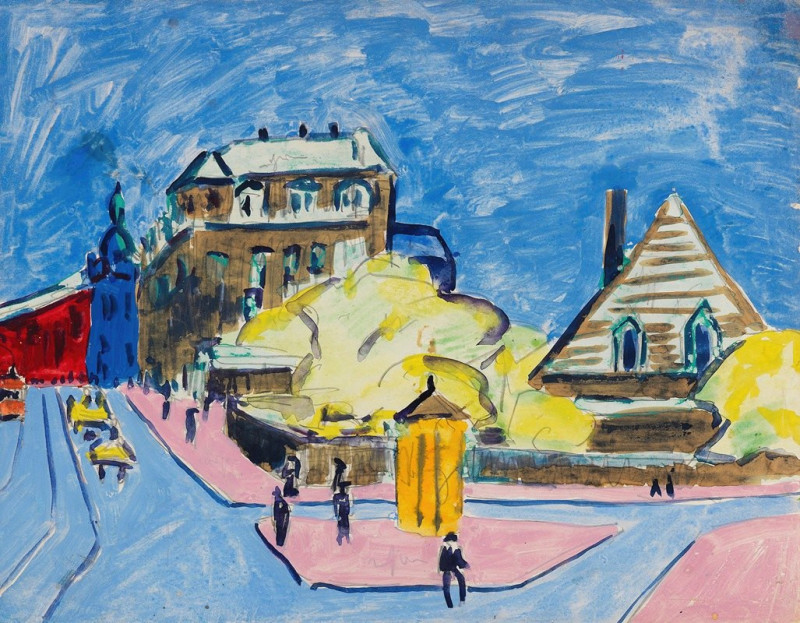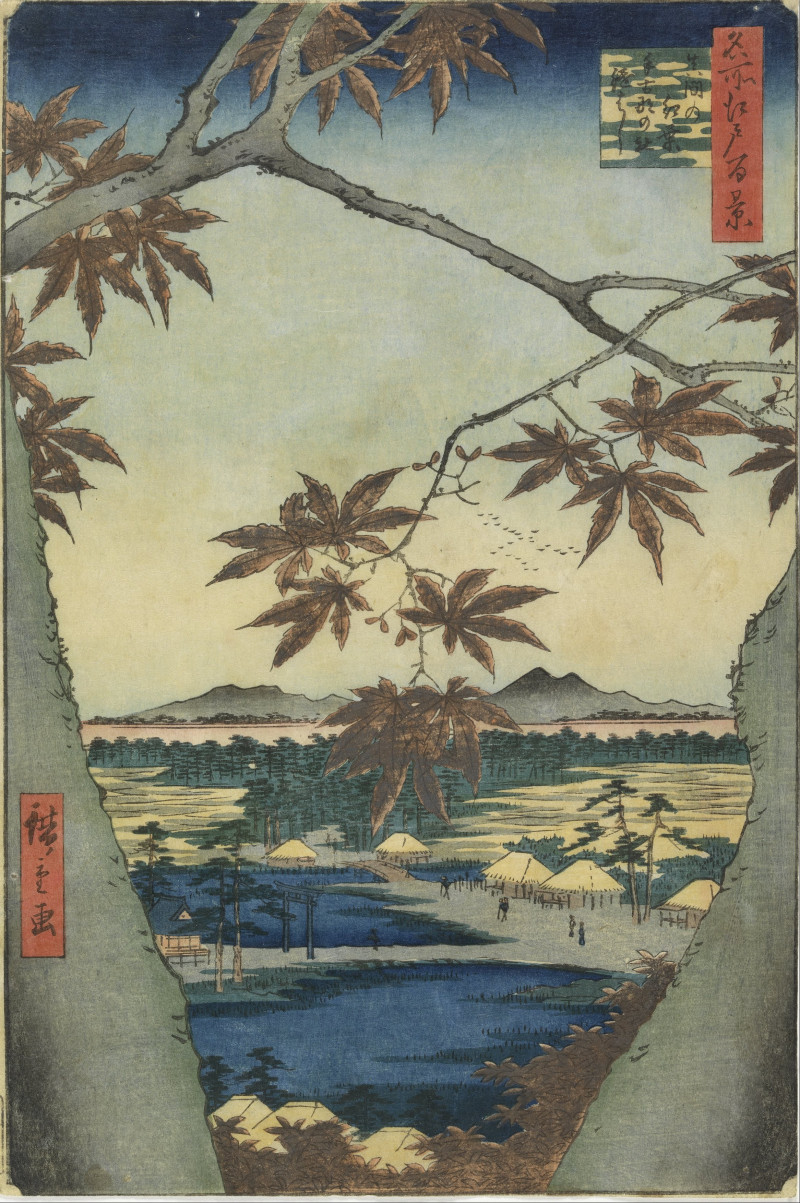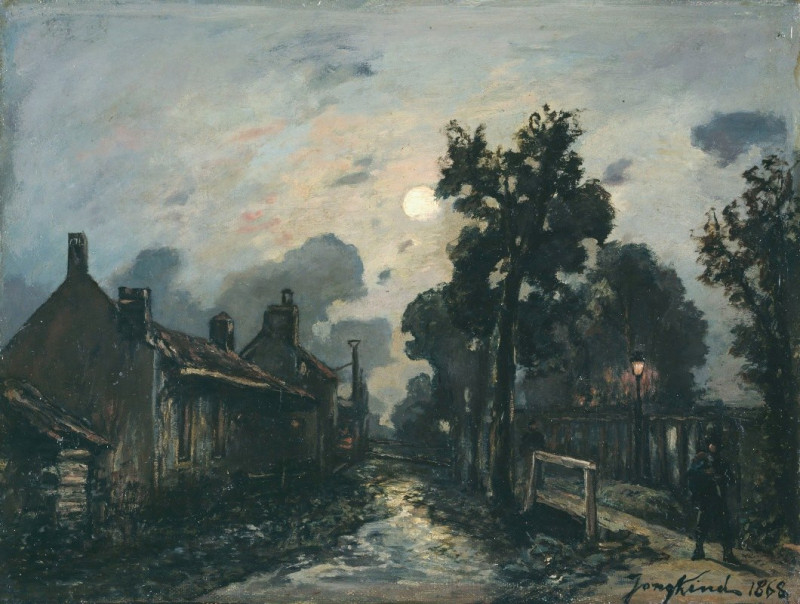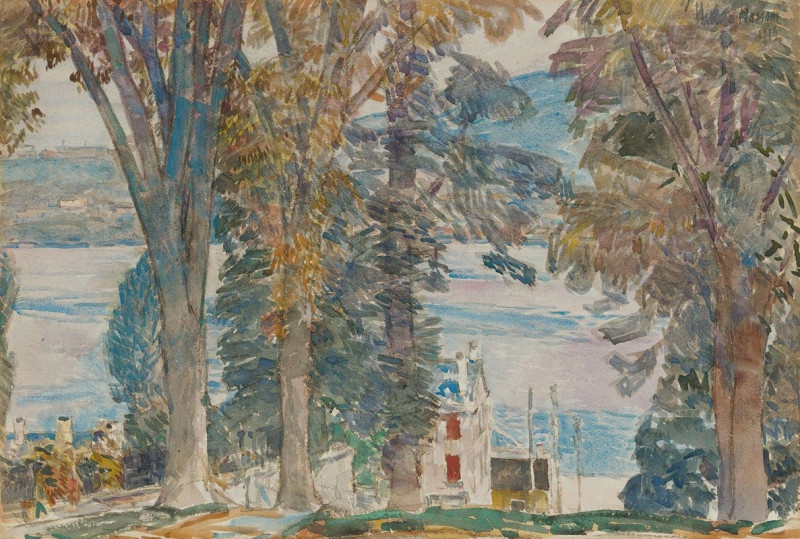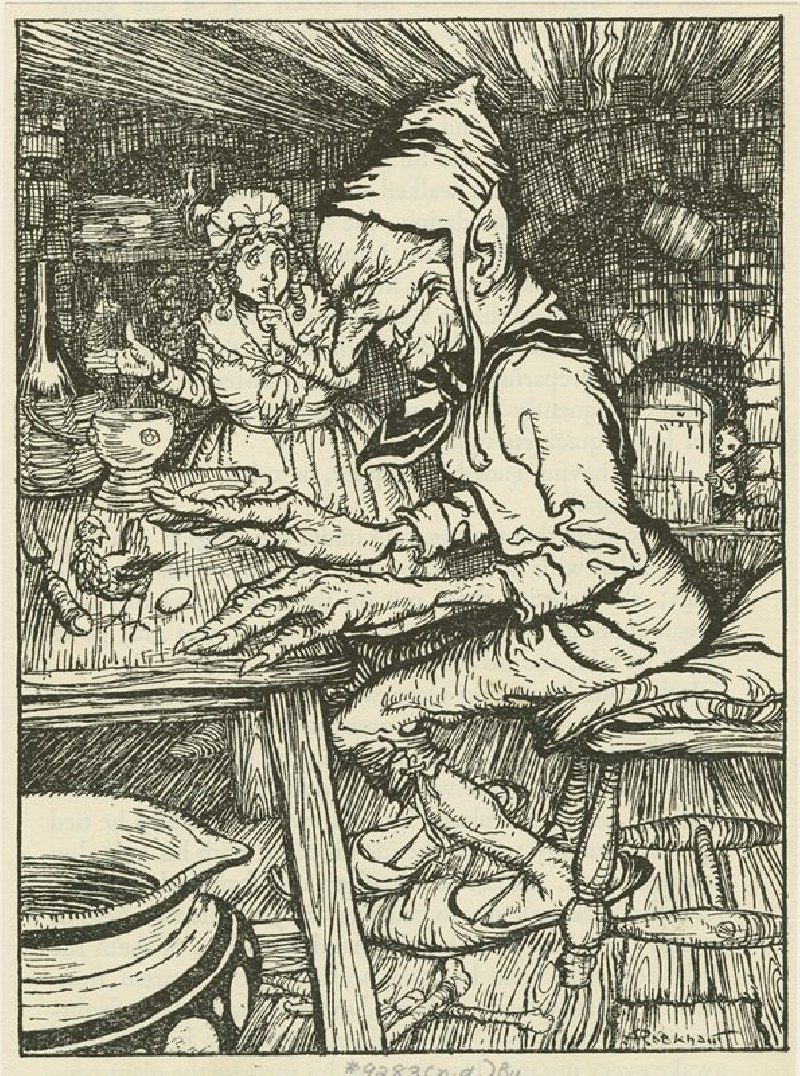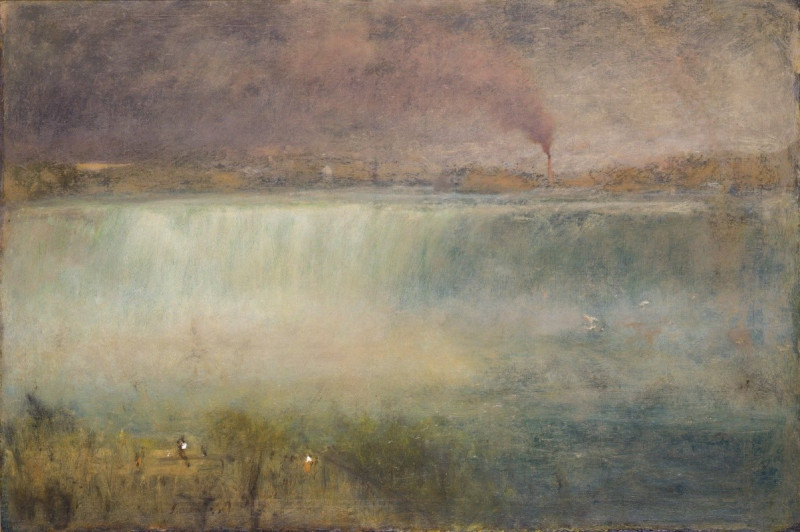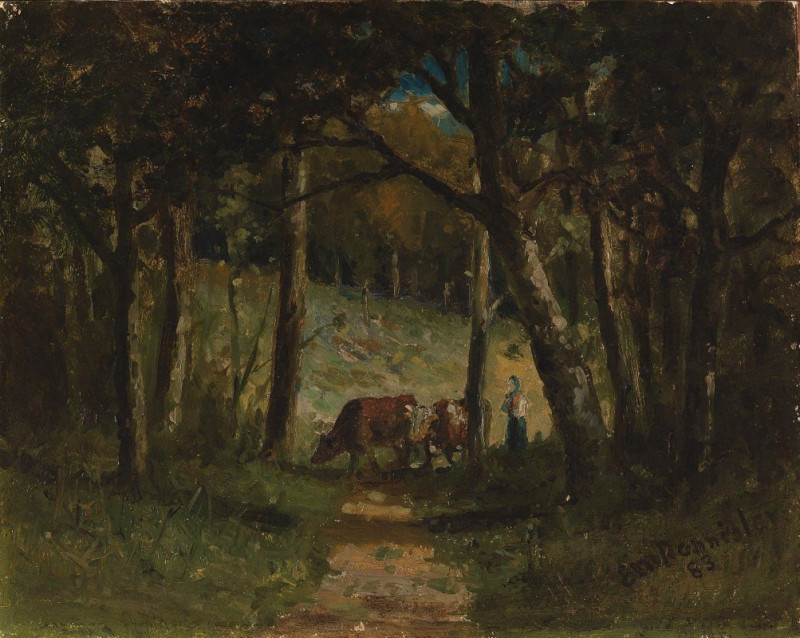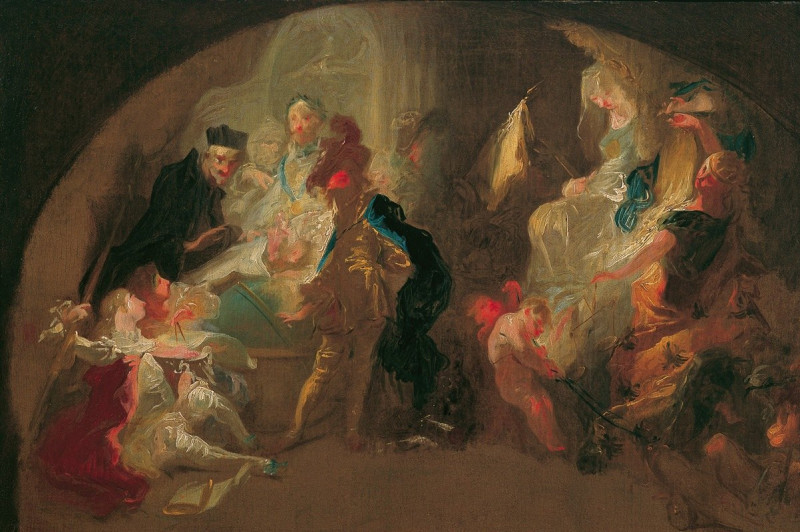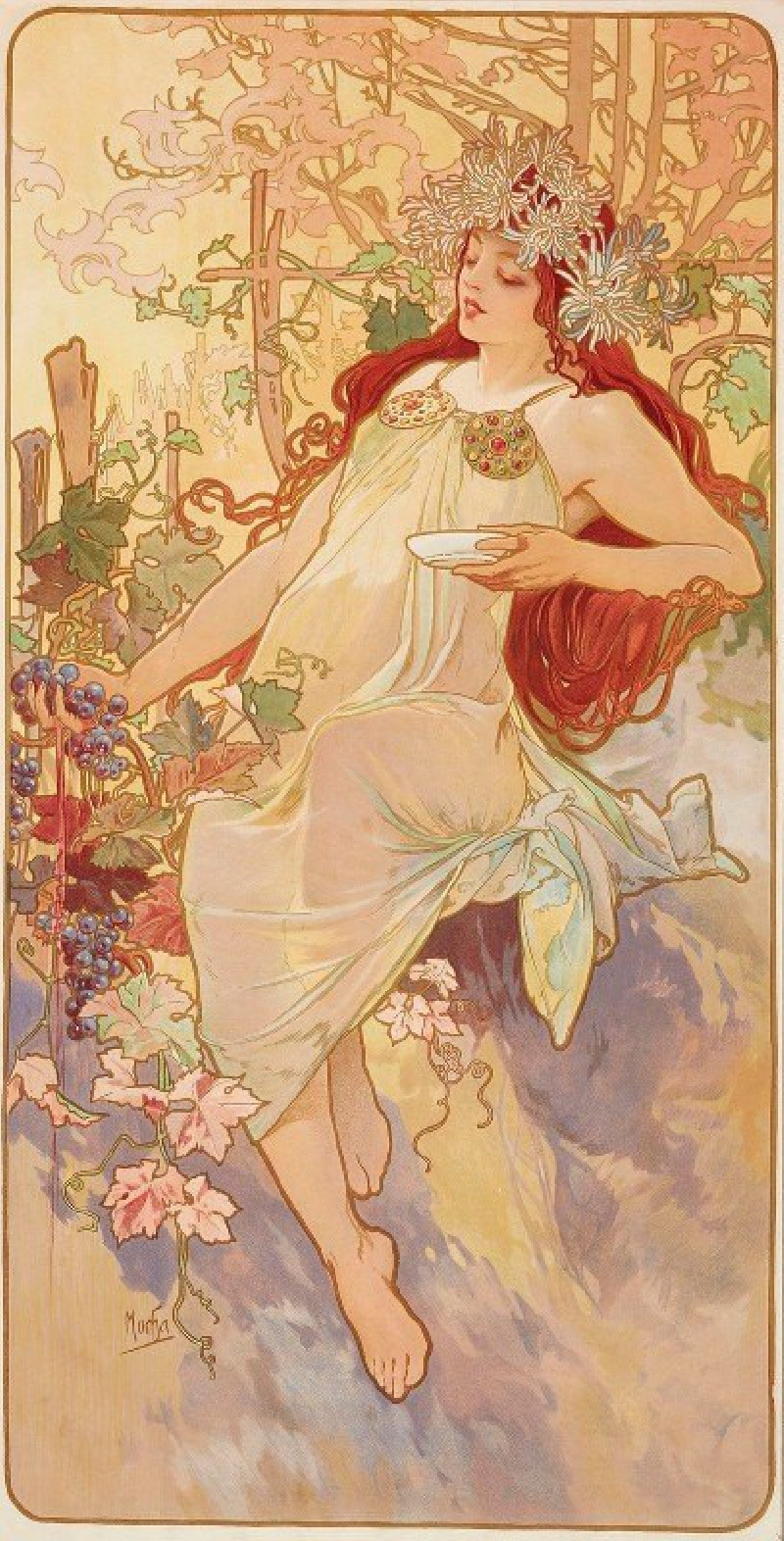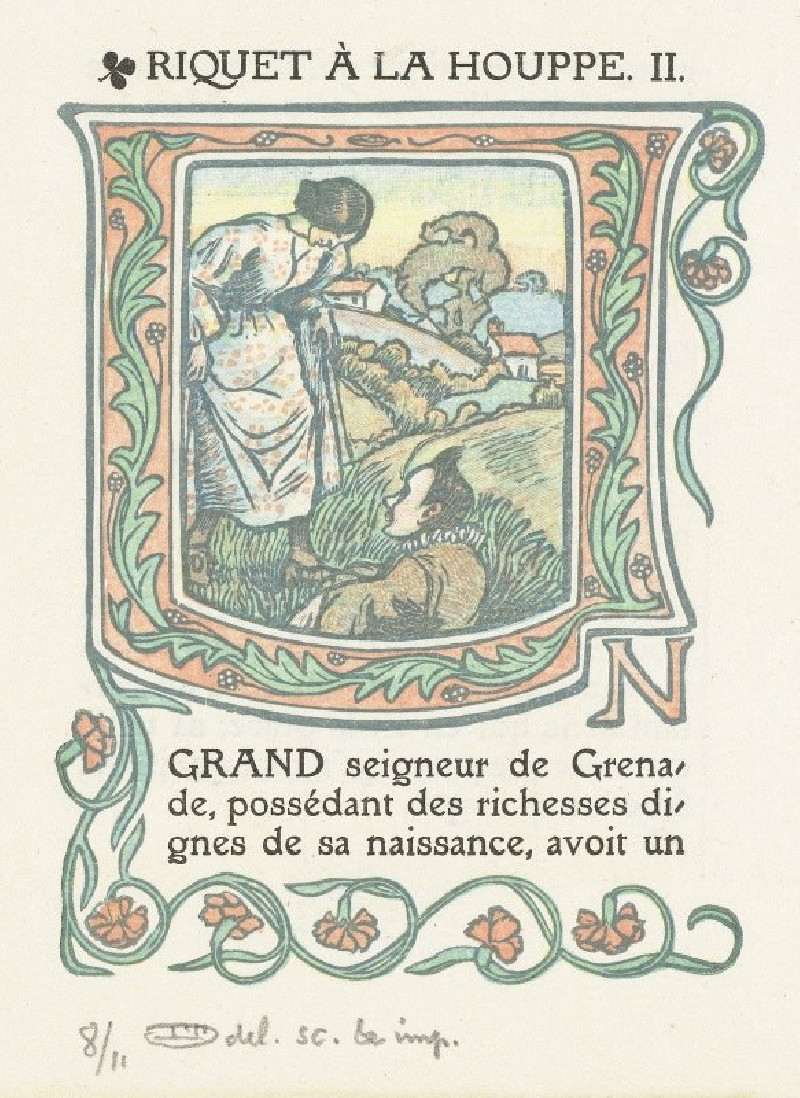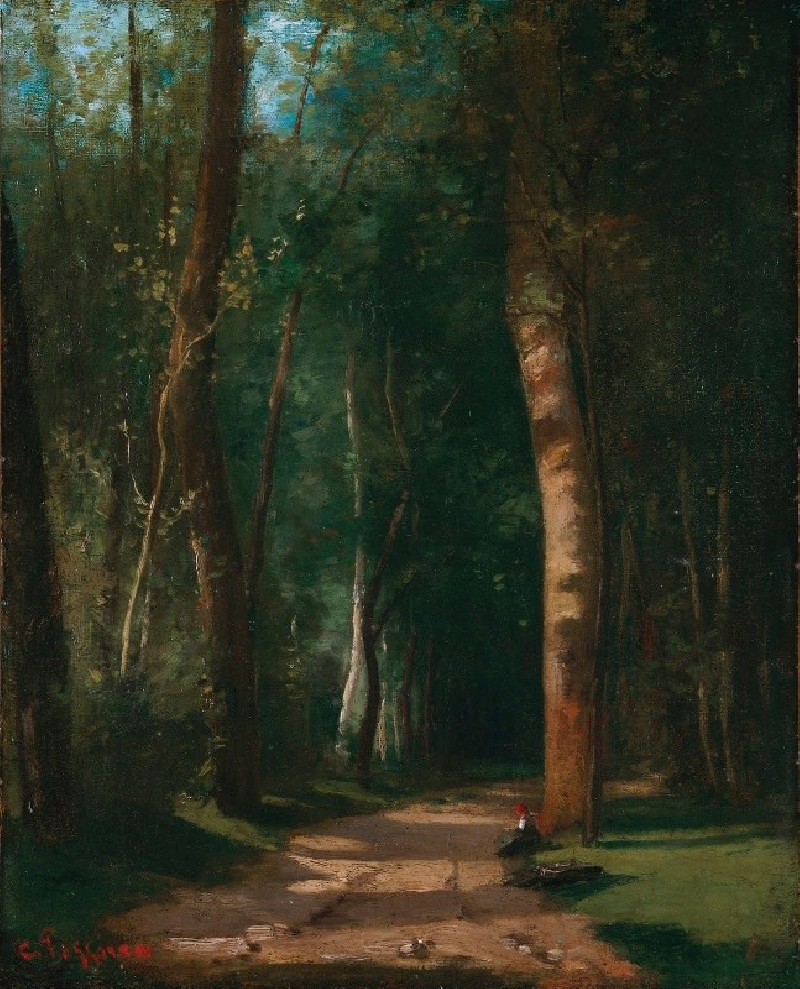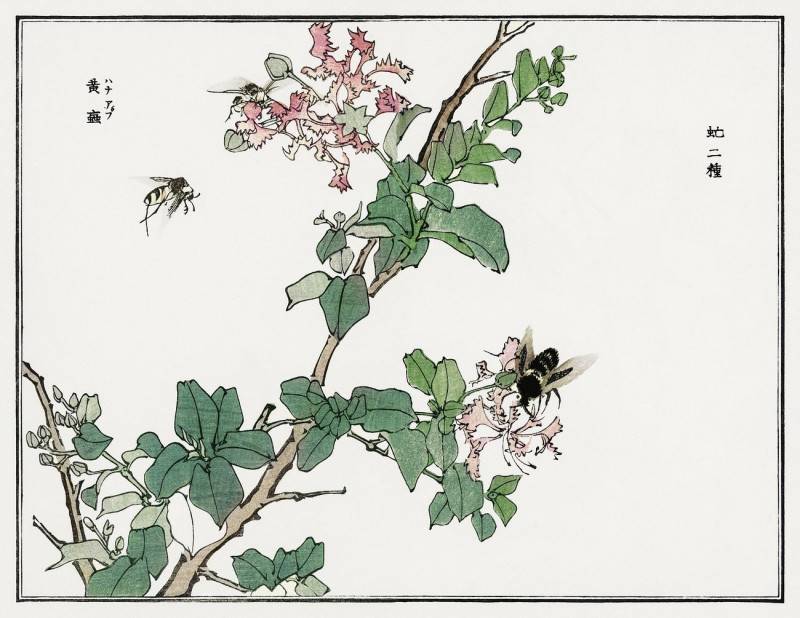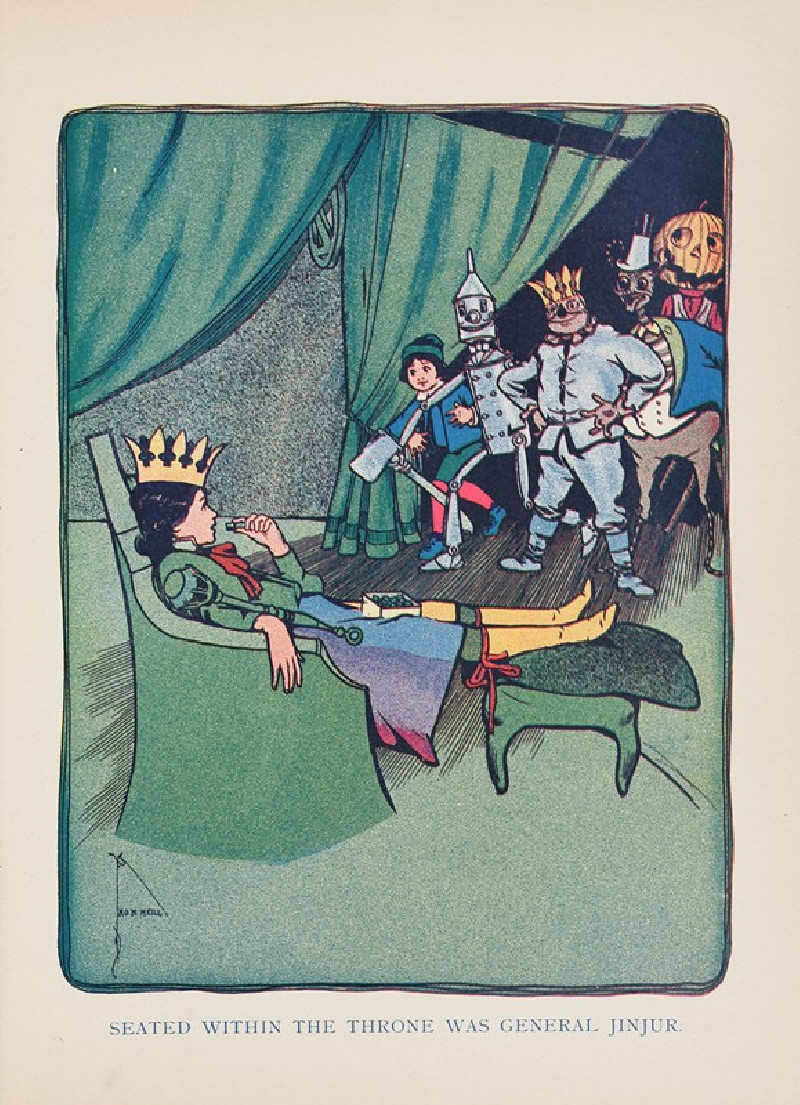Dante Rencontre Béatrix (1899)
Technique: Giclée quality print
Recommended by our customers
More about this artwork
Welcome to an enchanting moment captured by the brush of Henri Martin in his striking work, "Dante Rencontre Béatrix" (Dante Meets Beatrice), created in 1899. This fascinating painting invites viewers into an ethereal landscape where literature and brush strokes merge into a hauntingly beautiful scene.In this evocative artwork, we witness a mystical meeting between Dante Alighieri, the famed Italian poet, and Beatrice, his idealized beloved who also serves as his guide in the Divine Comedy. The setting is atmospheric and otherworldly, under a sky streaked with shades of peach, orange, and dark blue, suggesting the twilight hours where dreams intertwine with reality.The figures are illustrated with a soft, ghostlike quality. Beatrice, robed in glowing white, contrasts with the darker, earthier tones of Dante, who is depicted with an aura of profound contemplation. The landscape around them, undulating and sparse, enhances the solitude and significance of their encounter. Martin employs a delicate play of light and shadow to emphasize the spiritual and transcendent nature of this meeting, suggesting not just a moment in time, but a pivotal, soul-shaping event."Dante Rencontre Béatrix" is more than just a depiction; it is an invitation to ponder the complexities of love, inspiration, and the poetic journey.
Delivery
Returns
Henri-Jean Guillaume "Henri" Martin (5 August 1860 – 12 November 1943) was a French painter. Elected to the Académie des Beaux-Arts in 1917, he is known for his early 1920s work on the walls of the Salle de l'Assemblée générale, where the members of the Conseil d'État meet in the Palais-Royal in Paris. Other notable institutions that have featured his Post-Impressionist paintings in their halls through public procurement include the Élysée Palace, Sorbonne, Hôtel de Ville de Paris, Palais de Justice de Paris, as well as Capitole de Toulouse, although the Musée des Beaux-Arts de Bordeaux and Musée des Augustins also have sizeable public collections.

